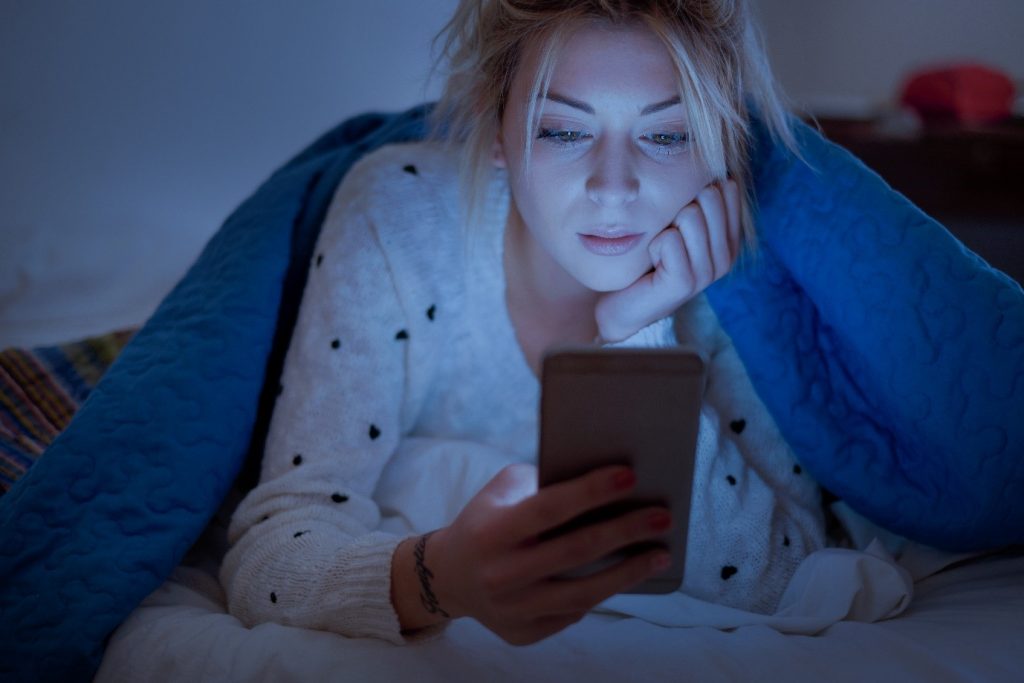


New research from the Oregon State University has found prolonged exposure to the blue light from your phone, computer and household fixtures, could be affecting your life longevity, even when it doesn’t shine directly in your eyes. The study suggests the blue wavelengths produced by light-emitting diodes damage brain cells and retinas.
The experiment was conducted on a common fruit fly because of the cellular and developmental mechanisms it shares with other animals and humans. The flies were examined as they responded to daily 12-hour exposures to blue LED light similar to the blue wavelength found in devices like phones and tablets. The research concluded blue light accelerated aging because flies exposed to it had damaged retinal cells and brain neurons and had impaired locomotion. This meant that the flies’ ability to climb their enclosure walls was diminished. Some of the flies were mutants that do not develop eyes, and even they had brain damage and locomotion impairments. A researcher said that the flies tried to avoid blue light, indicating they didn’t have to see the light to be harmed by it.
What Blue Light Is
Blue light is a colour in the ‘visible light spectrum’ that can be seen by the naked human eye.



Sunlight contains red, orange, yellow, green and blue light rays and many shades of each of these colours, depending on the energy and wavelength of the individual rays. Combined, this spectrum of coloured light rays creates what we call “white light” or sunlight.
Without getting into too much detail, there is an inverse relationship between the wavelength of light rays and the amount of energy they contain. Light rays with long wavelengths contain less energy, and those with short wavelengths have more energy. Rays on the red end of the light spectrum have longer wavelengths, with less energy. On the other hand, rays on the blue end of the spectrum have shorter wavelengths and more energy. These rays are sometimes called blue-violet or violet light.
Most notably, the display screens of computers, electronic notebooks, smartphones and other digital devices emit significant amounts of artificial blue light. Its short-wavelength, high energy blue light scatters more easily than other light. When you’re looking at digital devices that emit significant amounts of blue light, this unfocused visual “noise” reduces contrast and can contribute to digital eye strain.
Pretty much all blue light passes through the cornea and lens which reaches the retina. Medical professionals say too much exposure to blue light may affect vision and could prematurely age the eyes, leading to diseases such as macular degeneration. This age-related disease is caused by the deterioration of light-sensitive cells in the retina and can even cause blindness.



Despite the negative research, not all blue light is bad. Some blue light exposure is essential for good health as it boosts alertness, improves memory and cognitive function and can elevate our mood.
Light therapy is used to treat seasonal affective disorder (SAD), which is a type of depression that’s related to changes in seasons (For example, when it goes from Autumn to Winter). The light sources for this therapy emit bright white light that includes a fair amount of blue light rays.
Blue light is also needed to conduct the body’s natural sleep cycle. Too much exposure to it late at night can disrupt this cycle which potentially causes sleepless nights and daytime fatigue. Natural light is crucial for the body’s circadian rhythm.
How To Avoid Blue Light Exposure
The sun is the main source of blue light, so it’s often difficult to avoid. Although, the home doctor experts at House Call Doctor have suggested ways to avoid exposure to it.
Lenses that block blue light emissions increase contrast significantly. Therefore, computer glasses with yellow-tinted lenses may increase comfort when viewing digital devices for long periods. Computer glasses can be purchased without a prescription to avoid blue-light exposure. Though if you do have vision correction glasses, a specific type can be prescribed to enhance your vision for the particular distance from your face to device.
If you are using your phone a lot, it might be worth turning on your blue light filter. This is a simple, convenient way to reduce blue light exposure without affecting the visibility of the display, and is available for smartphones, tablets, and computer screens.
While research suggests people should wear sunglasses that filter both UV and blue light, and avoid browsing on smartphones, laptops and similar gadgets in the dark, it seems difficult to achieve this in the digital age we live in. There may be a day where phones have the ability to auto-adjust their display based on the length of usage but until then, it’s worth being aware of how much time you’re spending on your phone.




